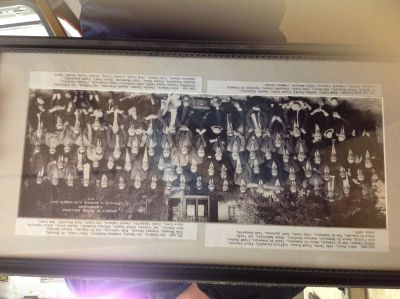Fraternal organizations are the backbone of cultural preservation. The importance of these organizations to our ancestors was immeasurable. Today, we can find very helpful information in our search for family history among the records of organizations like this. For that reason, La Gazzetta is reprinting this article from July 2018 as a gentle reminder of yet another resource to locate information on your ancestors.
When our ancestors came to America in the late 1800s and early 1900s, they realized there was a need to form benevolent societies. These societies’ missions were to help members in times of need and to help them manage their way in their new homeland. The societies formed were based on a variety of premises. Some were established by individuals who were from the same Italian village or Province, some required that members be practicing Catholics, while others were more inclusive and welcomed all Italians. Today, some of these societies are celebrating a century or more of existence and have membership records, histories or photographs that may provide valuable family history information. We are going to explore what type of records may exist and how to locate them.
Most of these organizations will have a formal charter which was filed with the state in which the organization was formed. The charter will list the officers and early organizers of the society. The information found in the charter can help establish a family surname before it was “Americanized” if your ancestor was a founding member. If the organization is still in existence, the original chart will be a part of their archives. Additionally, some societies offered life insurance for their members. This was an extremely valuable benefit as our early immigrant ancestors often worked in various dangerous occupations such as in mines, mills, quarries, and on railroads and loss of life in work accidents was not uncommon. Records of life insurance policy applications and payments will list beneficiaries which may lead to clues to determine dates of birth and death as well the location of an ancestral hometown or the names (including maiden names) of survivors.
Even if records no longer exist, another extremely valuable family history source are old photographs. Special events were often photographed and if the society still maintains a physical presence, these old photographs may be on display in their halls. I was pleasantly surprised when I visited the Carovillese Lodge and Club in Akron, OH and found my great uncle, Francesco DiDomenico, in a 1926 photograph of members taken at a society outing.
The most notable fraternal organization is the “Figli d’Italia,” what we now know as the Order Sons and Daughters of Italy in America. It was established in 1905 in NYC but had and still has chapters across the country. The order established free schools to help teach new immigrants English, assisted members in their quest to become U.S. citizens and provided life insurance and mortuary funds. Some of their records have been digitized and are searchable at www.ancestry.com (by subscription or free at a local library).
The Western Reserve Historical Society in Cleveland in 2005 established a collection of Italian American cultural records that includes letters, diaries, journals, photographs, and a variety of other memorabilia including some fraternal organizational records. If you are in the Cleveland area, it would be worth a visit to view the collection. Even if you don’t find a specific family record, the artifacts in the collection could provide you with a better appreciation of our immigrants’ early lives in America and can help you enrich your own family history. Information about the collection and contact details are available at www.wrhs.org/research/library/significant-collections/italian-american.
There are hundreds of societies across the U.S. and Canada, including many in Northeast Ohio. By looking through the last pages of La Gazzetta Italiana, you will find several reporting on their events. For other locally based societies, you can use www.google.com to search by focusing your search on the location where your ancestor once lived to determine if there was a society at one time and whether it is still in existence.
Some societies have websites or Facebook pages where you can find contact information to ask about the availability of records or photographs. In my hometown of Lowellville, OH, our fraternal society, Fraterna Societa Della Madonna Del Carmel (Mt. Carmel Society), which has been in existence since 1895, has both a website and Facebook presence. The website contains a history page with vintage photographs, news clippings and biographical information of its founders.
You may also discover a clue to your family’s association with a fraternal society by looking through your family heirlooms. Societies often issued sashes or ribbons to their members. These items were worn with pride by our ancestors at social and civic events. A google search of the name on the memorabilia may help you discover where the society was located.
On a related note, I recommend that you consider joining one of these fraternal societies to enhance your experience of our Italian American heritage and culture and to create new family history for your descendants. By joining a society, not only will you gain new experiences and friends, you will be doing your part to keep alive a tradition that was so vitally important to our ancestors when they first settled here in America.
This wonderful 1926 photograph of Akron’s Society Di Mutua Soccorso Carovilese (Carovillese Lodge and Club) has the names of its members documented, many of which are original Italian surnames.



